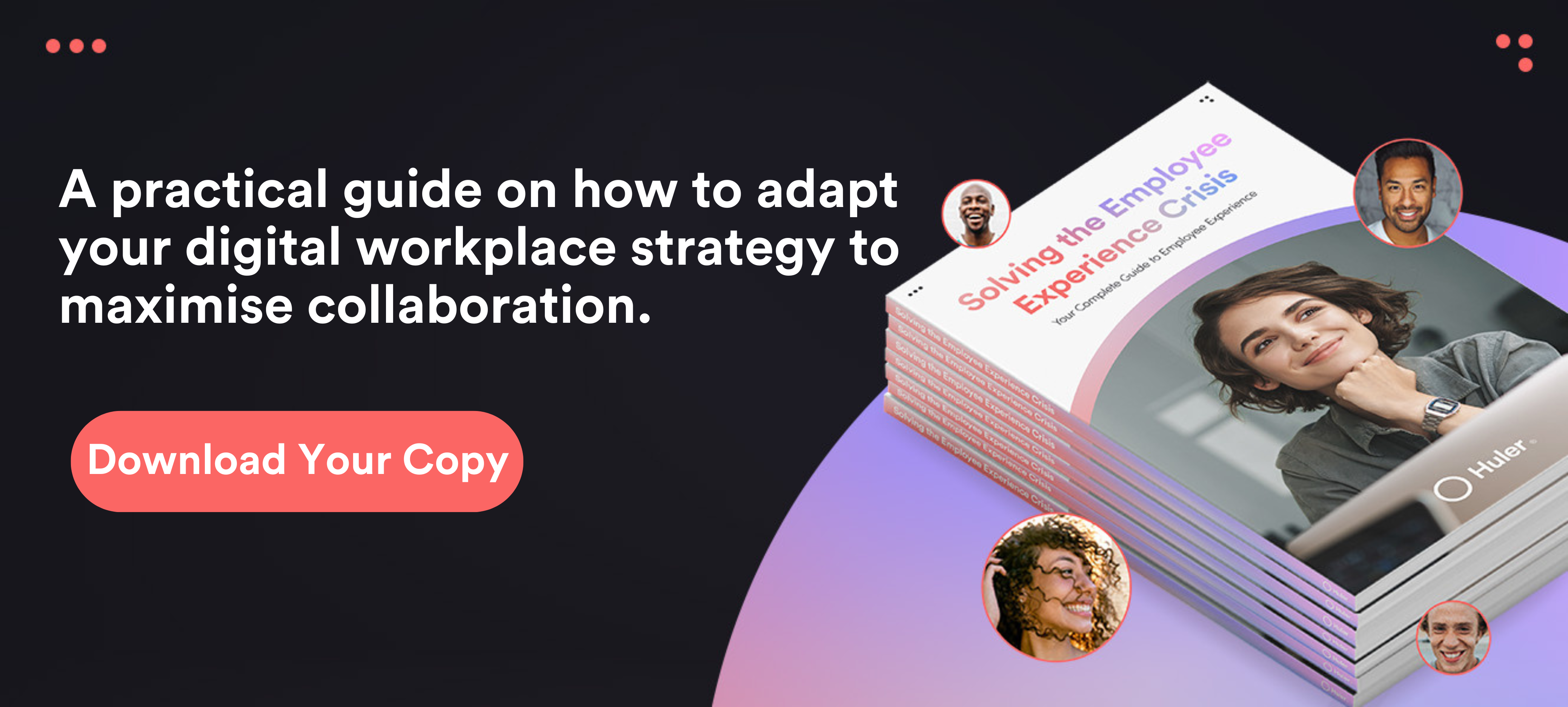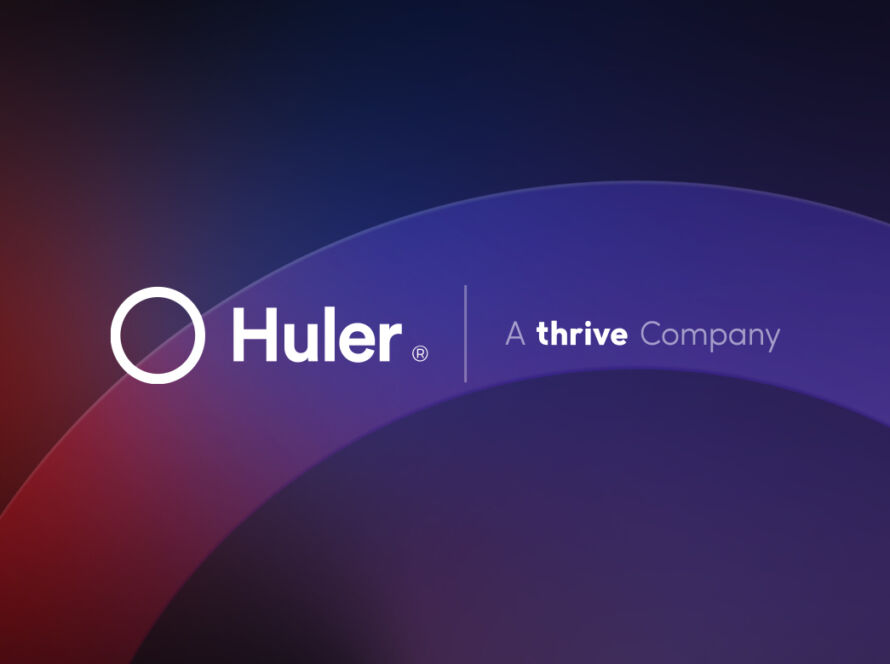It should come as no surprise to hear that technology plays a key part in both our business and personal lives. According to DataReportal Digital 2022: Global Report Overview:
- Global internet users have climbed to 4.95 billion this year (up 4% over the past year)
- There are now 4.62 billion social media users around the world
- More than two-thirds of the world’s population now uses a mobile phone
From the above statistics, it’s safe to assume that the majority of us are no strangers to taking up new technology. In spite of that, for businesses investing in new technology with the aim of working smarter and more efficiently, adoption tends to be a constant sticking point which can prevent an organisation from reaching its full potential.
Common Obstacles To Tech Adoption
Before we dive into our list of tips and tricks to help employees adopt new technology, it’s important to understand why adoption is lacklustre in the first place. Although it might be tempting to blame the pandemic and the rise in working from home on reluctance to adopt new systems, it is important to realise that slow, unenthusiastic uptake of new technology is nothing new.
In fact, in 2019 a survey from the Economist Intelligence Unit carried out across Australia, China, Hong Kong, New Zealand, Singapore, India, the UK and the US aimed to explore barriers to tech adoption and identified a number of key challenges relating to it, including:
- Employee skills
- Lack of senior management awareness
- Lack of remote working opportunities
- Organisational culture
- Issues of complexity
- Cost and risk
- Inadequate infrastructure
- Legacy systems
- Legacy approaches to innovation and problem solving
As the old saying goes: knowledge is power. Having a strong understanding of these obstacles can improve businesses’ ability to plan new initiatives, build a business case, and implement new technology.
So now we know what we know, how can your organisation go about supporting employees to adopt new technology?
9 Tips For Better Tech Adoption In The Workplace
Go Live Is Just The Beginning
Implementing new technology in the workplace is a big job. From conducting research to building a business case and allocating the correct resources, there are lots of plates to spin and avenues to consider. But all too often during projects like these, going live is seen as the last step in the dance.
This “set it and forget it” attitude is often a key reason new technologies in the workplace fall flat. Instead, it’s crucial to look at launch from a different perspective and not see it as the end but rather the beginning.
Here are some ideas to help you keep momentum once the excitement of launch is over and reality sets in:
- Review performance against your original objectives. It’s easy to lose sight of what you initially set out to achieve as you find yourselves in the weeds of implementing new technology, but going back to the very beginning will help you to understand how your new implementation is performing against expectations.
- Collect user feedback. As we’re talking about employee uptake of new technology here, it makes sense to ask your users how they are feeling about it. Surveys and polls will give you a good understanding of the overall sentiment towards the new technology and identify common challenges which you can address moving forwards.
- Identify key use cases. If you have formed a team of super-users during the implementation of your new technology (which we highly recommend), use them to your advantage. Ask them to come forward with successful use cases, positive stories, tips and tricks which you can circulate to support others to make the most out of the new technology.
Start With The End In Mind
Before you even start researching new technology for your business, you should have an idea of what you want to achieve with it. With such an abundance of options and variations of software on the market such as employee engagement tools, learning experience platforms, employee experience platforms, internal communications solutions and digital workplaces it’s easy to fall prey to shiny object syndrome and end up with a product that has all the bells and whistles but doesn’t move the needle.
Before anything else consider what it is that you want to achieve, and how you would like your technology to support that. Do you want to increase employee engagement with your internal communications? Improve productivity? Reduce absenteeism and turnover?
Your end goal is your North Star and should inform the strategy at every part of your journey from building your business case to what happens post-launch. Have a clear idea of what success looks like for both your roll out and in-life so you can steer your project in the right direction.
Involve People Early And Communicate Often
From the very beginning of your project you should involve employees in the process to maximise adoption.
Make it clear why it’s important to implement new software or technology and outline the core benefits to each department. Alongside this, be sure to ask what’s already working for employees and what they would like to see improved moving forwards.
There’s a good chance that your people will have ideas and feedback that will come in handy during the selection process. What’s more, listening carefully at this stage will support you in choosing technology that meets their specific needs and thus drives adoption.
Make It Integral To The Working Day
New technology projects fall flat for one of two key reasons: poor processes and inadequate features. If there is unclear governance, no clear, defined purpose and lack of executive engagement, how can you expect your people to integrate it into their everyday working lives? Similarly, if the software offers a poor user experience and is filled with outdated or irrelevant content, most employees are going to struggle to see the value in using it.
Successful tech implementations require an innate understanding of what employees need to do their jobs better and how it can become integral to the working day. The aim of an employee intranet, for example, is to make content more readily accessible and engaging. The uptake of your new platform is likely to be minimal if it is difficult to navigate, or is not up to date. After all, it is unlikely to make life any easier for your people.
Pre and post-launch, you should ensure your new technology is integral to the day to day processes in your business. That means keeping it up to date, relevant, easy to use and ensuring employees have the digital skills required to navigate and make the most of it in the context of their job role and duties.
Create A Buzz
Launching a new tech initiative is exciting for key people involved in its creation and implementation. But that excitement doesn’t trickle down to the end user without careful management of a launch campaign.
Consider innovative and interesting ways to create a buzz around the launch. This could include:
- An internal press release. An internal announcement is an effective way of circulating information about your new technology ahead of time, including what it’s called, the benefits, why it’s being implemented and how to use it.
- A countdown to launch. A visual countdown clock will create a sense of excitement among employees, but it also has other important functions too. Namely, it sets a firm expectation that something is going to change soon and prepares employees for what’s to come.
- Pre-launch testimonials. Reviews and testimonials can be very persuasive. And your employees are more likely to try out a new piece of software or technology if they see a review from another user. Ask your super users, or individuals who are already familiar (and keen on) the new product, to write a review. Then circulate these ahead of time.
- Make it fun. Depending on the type of technology you are rolling out, you could look to run a competition that encourages individuals to test drive it. For example, if you are rolling out an employee experience platform like HulerHub, you could ask users to populate their MyTiles and then give out prizes based on the best-looking ones. Alternatively, you could create a scavenger hunt as part of your launch and reward winners with a cool prize.
Lean On Your Customer Success Team
Whatever new technology you’re looking to roll out, it’s likely you’ll have the support of a customer success team on your side. So make sure you make good use of them when it comes to your implementation, launch and post-launch strategy.
Here at Huler, we allocate each of our customers a dedicated customer success manager who is primed to offer support in the form of advice, top tips and documentation, all of which will help you easily make the very best of your new employee experience platform.
Don’t shy away from asking for help. After all, that is what they’re there for, and any customer success team worth their salt will be eager to provide support when it comes to putting your best foot forward. Whether you need inspiration in the form of use cases or a little extra assistance in getting set up and optimised for success, take advantage of all the resources available to you.
Launch At A Time That Makes Sense
Timing is everything when it comes to launching new technology. If you implement it during busy times, it is likely that no one will have time to play around with it and get to know it, which could cause it to be forgotten.
Ideally, your launch should be timed so that your users can take time out of their day (or week, even) to explore the platform, learn how to use it effectively, and test it. Naturally, this might not be a Monday when everyone is feeling a little lethargic and getting on top of their emails. Similarly, it might not be a Friday when everyone is looking forward to the weekend and might be more than a little distracted.
The optimum day and time for a new product launch will vary from business to business. So you should take the time to carefully consider both when you launch, and who you launch to. We strongly recommend rolling out new technology to small groups if possible. This will help you to focus on maximising each group’s engagement with the tech and allow you to effectively gather and implement feedback before moving on to the next cohort.
Prioritise Flexibility and Accessibility
Old habits die hard. And if you’re looking to change behaviour in your organisation through implementation of new technology it’s essential to give employees the space and time to change their habits.
Considering this, the most effective way to empower your people is to give them flexibility and make it easy for them to change the way they do things.
According to research by Cisco, there is strong evidence that employees globally are using their own devices for work. And that comes with key benefits including: increased productivity, employee satisfaction, and lower costs.
With that in mind, your new technology should be flexible and accessible to everyone, wherever they are in order to drive adoption. What’s more, you should also go to great lengths to ensure your technology can be accessed by people of all abilities, including people with disabilities.
It’s important to keep in mind that your people are likely using technology in a variety of different ways every single day – and not just for work. Because of this, they will already have user experience expectations that your technology should live up to. If it doesn’t, it’s likely they won’t use it as often as you want them to.
Make Room For Personalisation
Our mantra here at Huler is: one size never fits all. Personalisation is key to great employee experiences. And your people’s interaction with technology is an integral part of the digital employee experience.
As an example, individualised portals add a personal touch to a digital workplace – as well as allowing access to all tools and systems in one place, with customisations adjusted to each employee’s role, location, and other attributes. This can make all the difference for your people, whose objectives are to find what they need quickly and easily with very little friction in between.
Further to this, technology that looks and feels like your employer brand, and reflects your core values through both its content and aesthetic can support in fostering a sense of belonging and purpose among employees, especially hybrid and remote teams who don’t necessarily see each other face to face on a day to day basis.
Driving Adoption Of New Workplace Tech With HulerHub
Technology is a necessary part of any business. But simply adding more and more without proper planning and implementation, like many of us did during the pandemic, is not enough. As time wears on, many organisations are waking up to discover that some of the tools they invested in to enable remote working either aren’t being used regularly or efficiently.
This highlights the importance of taking a strategic approach to implementation that not only focuses on the overarching goals for a piece of technology but also considers how to drive adoption and uptake across the length and breadth of the workforce.
We created HulerHub, our flagship employee experience platform, to bridge the gap between technology and the human touch. We understood that employees were crying out for better experiences, especially while working remotely or within hybrid models. We also understood that many organisations were struggling to make sense of, organise, and maximise on the plethora of technology at their fingertips.
The purpose of HulerHub is to unite all of the things that make a company tick inside a unified digital workplace that’s personalised to each user. Within an easy to use, intuitive, consumer-grade platform, employees can easily navigate to and discover what they need in a timely, frictionless way. What’s more, they can also bring their own personality and flair into the software too, creating a visually engaging experience layer that keeps them coming back, and in turn engaging with other technologies in your stack too.
To find out how HulerHub can help you drive adoption of new tech investments and improve the employee experience in your organisation, book a demo today.







